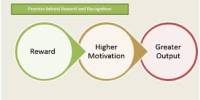A study involving 11,000 dogs found that the dog’s gender, age, and breed, as well as any behavioral issues and certain environmental factors, are linked to hyperactive and impulsive behavior and inattention (ADHD).
“Our findings may aid in the identification, understanding, and treatment of canine hyperactivity, impulsivity, and inattention. Furthermore, they found similarities with human ADHD, confirming the importance of dogs in ADHD research “Professor Hannes Lohi, head of the University of Helsinki’s canine gene research group, agrees.
“Dogs and humans share many similarities, including physiological traits and the same environment. Furthermore, ADHD-like behavior occurs naturally in dogs. As a result, dogs are an intriguing model for studying ADHD in humans” Sini Sulkama, a doctoral researcher, says
Professor Lohi’s research team collected data on over 11,000 dogs through an extensive behavioral survey. Questions based on a survey used in human ADHD research were used to assess hyperactivity, impulsivity, and inattention. The study’s goal was to identify environmental factors underlying canine ADHD-like behavior as well as possible links to other behavioral traits.
Dogs and humans share many similarities, including physiological traits and the same environment. Furthermore, ADHD-like behavior occurs naturally in dogs. As a result, dogs are an intriguing model for studying ADHD in humans.
Sini Sulkama
The study also discovered that dogs who spent the majority of their time at home alone were more hyperactive, impulsive, and inattentive than dogs who spent more time with their owners or were not alone. According to the authors, ADHD-like traits in dogs can manifest as an inability to calm down, inattention, and constant barking or whining.
The dog’s age and gender as well as the owner’s experience of dogs make a difference
“We discovered that young dogs and male dogs were more prone to hyperactivity, impulsivity, and inattention. Corresponding observations regarding age and gender in relation to ADHD have also been made in humans” Jenni Puurunen, Ph.D., agrees.
Dogs who spent more time alone at home alone each day were more hyperactive, impulsive, and inattentive than dogs who spent less time alone. “Dogs, as social animals, can become frustrated and stressed when left alone, which manifests as hyperactivity, impulsivity, and inattention. It’s possible that dogs who spend more time alone get less exercise and attention from their owners” Sulkama ponders.
The researchers discovered a new link between hyperactivity and impulsivity and the owner’s experience with dogs, as the two characteristics were more common in dogs that were not their owners’ first dogs. The cause of this phenomenon is unknown.

“People may choose a less active individual as their first dog because it better matches the idea of a pet dog, whereas more active and challenging dogs can be chosen after gaining more experience with dogs,” Sulkama explains.
Significant differences between breeds
Breeding has had a significant impact on breed-specific behavior in various dog breeds. Differences between breeds can also point to genes that underpin the relevant traits.
“Breeds bred for work, such as the German Shepherd and Border Collie, are characterized by hyperactivity and impulsivity on the one hand, and excellent concentration on the other. In contrast, breeds popular as pets or show dogs, such as the Chihuahua, Long-Haired Collie, and Poodle, are thought to benefit from a calmer temperament, making them easier companions in everyday life. However, the ability to concentrate has not been regarded as important a trait in these breeds as it is in working breeds, which is why inattention is more common in pet dogs” According to Professor Lohi.
Link to other behavioral problems
The findings confirmed previously observed intriguing links between hyperactivity, impulsivity, and inattention, as well as obsessive-compulsive behavior, aggression, and fearfulness. ADHD is frequently linked to other mental disorders and illnesses. Obsessive-compulsive disorder (OCD), for example, is frequently associated with ADHD. OCD-like obsessive-compulsive behavior in dogs can manifest as tail chasing, constant licking of surfaces or themselves, or staring at ‘nothing.’
“The findings imply that the same brain regions and neurobiological pathways control activity, impulsivity, and concentration in humans and dogs. This adds to the promise of dogs as a model species in the study of ADHD. In other words, the findings can help to identify and treat canine impulsivity and inattention while also promoting ADHD research” Sulkama summarizes.
















